The Pink Lady Appears Overnight
On an October morning in 1966, commuters winding through Malibu Canyon were met with an astonishing sight. Above the south entrance of the canyon tunnel, a 60-foot-tall painting of a nude woman, skin painted in bright pink, had materialized on the sheer rock face overnight. The mysterious mural depicted a frolicking female figure holding flowers, soon nicknamed “The Pink Lady.” Within hours, word spread and the Pink Lady became a local sensation. Drivers pulled over, gawking at the cliff in disbelief, and traffic on Malibu Canyon Road slowed to a crawl as people craned their necks for a glimpse. For a few days, the Pink Lady made more headlines around Los Angeles than even President Johnson or the Beatles, captivating the public imagination. To some, she was a delightful piece of guerrilla art; to others, an obscene prank. But one thing was certain: Malibu had never seen anything quite like her.
The Artist and Her Inspiration
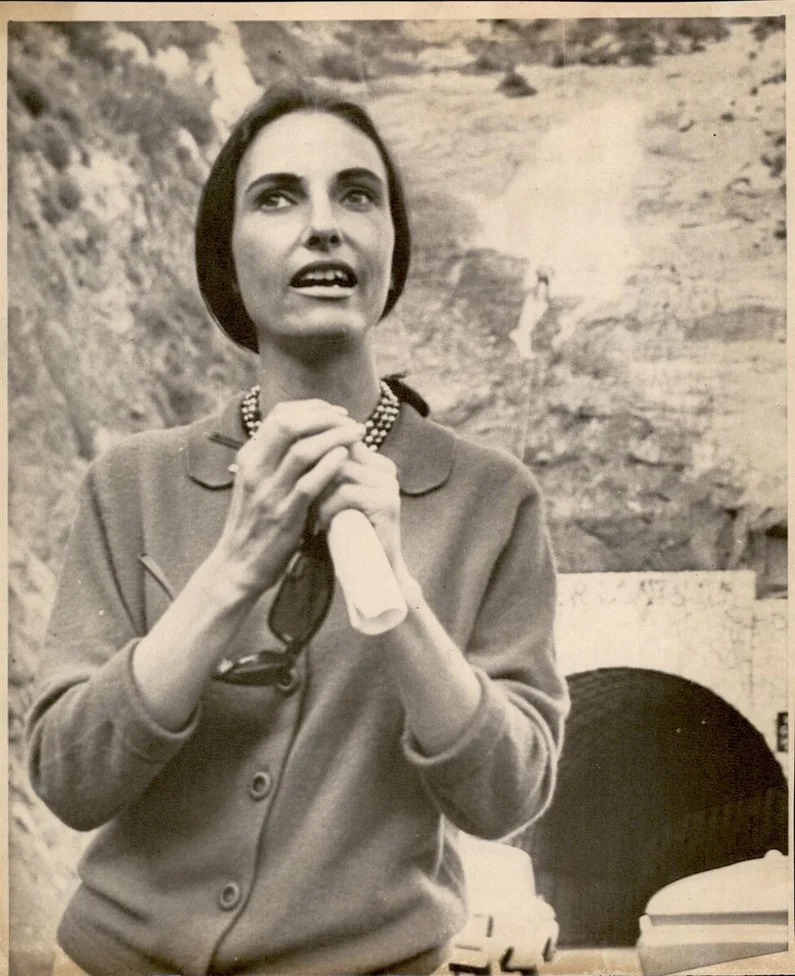
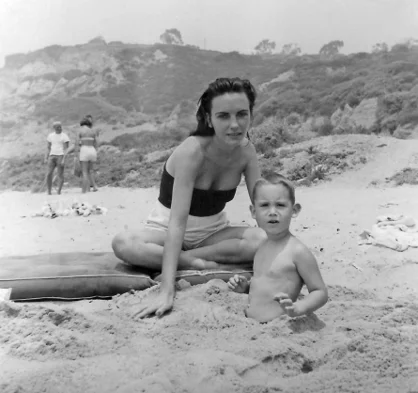
Behind this overnight marvel was an unlikely artist, Lynne Seemayer, a 31-year-old legal secretary and mother of two from Northridge. Seemayer was also an aspiring artist who frequently drove the canyon route to visit family in Malibu. The tunnel’s surrounding rocks had long been defaced by graffiti, which she felt was an eyesore.
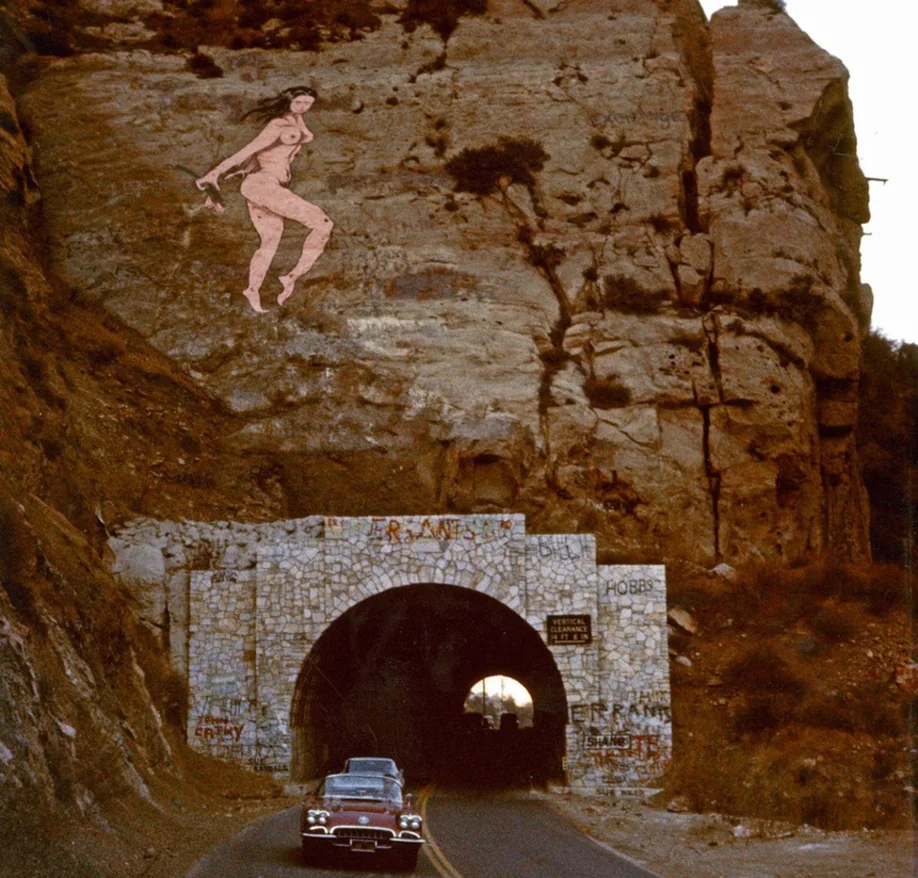
Determined to beautify the barren cliff, she hatched a bold plan. Starting in January 1966, under the light of full moons, Seemayer made several secret night expeditions to the site. Armed with ropes and sheer determination, she painstakingly scrubbed and chipped away the graffiti high above the road. What she envisioned for the freshly cleaned “canvas” was actually drawn from her own art portfolio. Her original idea was to paint a giant bird, but the spread wings wouldn’t fit on the rock face amid the brush. Instead, she settled on the curvaceous female figure from one of her paintings at home, enlarging it to monumental scale.
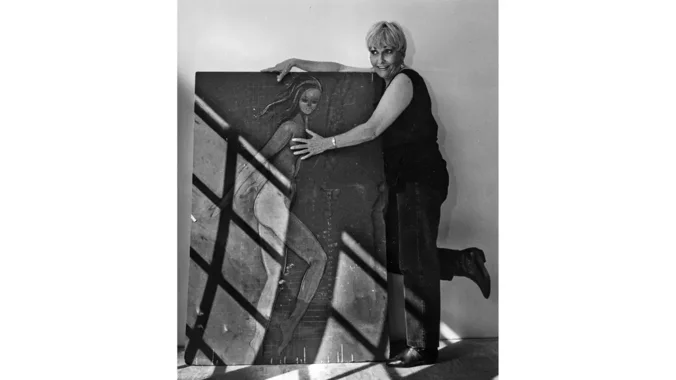
On the night of October 28, 1966 (with a bright moon illuminating the cliff), Seemayer finally put her plan into action. Dressed in black to avoid detection, she hauled her supplies up the mountain and even utilized a gigantic stencil to guide the composition. Then, dangling from ropes above the tunnel, she spent 11 hours in the dark painting the silhouette of a joyous nude woman dancing across the rock. By dawn, the Pink Lady was complete – a vibrant pink figure 60 feet tall, gleaming against the grey cliffside. Seemayer slipped back home at sunrise, having created one of the most legendary murals in Malibu history. She hadn’t signed her name to the work; in fact, she assumed no one would ever know who did it. It was simply art for art’s sake, her personal gift to Malibu’s landscape.
Shock, Awe, and Controversy
The Pink Lady’s debut immediately sparked both delight and uproar. Locals and travelers were astonished by the audacity of the piece, and many found it beautiful or at least harmless fun. Families drove out just to see the novelty. “I was blown away by it,” recalled one local, Dan Rich, who was a child at the time. “Every time I go through that tunnel, I mention the Pink Lady. I look up to see if she’s popping back through.” The artwork tapped into the free-spirited vibe of the 1960s, and plenty of Southern Californians embraced it as a quirky act of creative rebellion. Some admirers even began circulating a petition defending the mural, calling attempts to remove it “prudish, inartistic, inhuman and apathetic.”
Not everyone was amused, however. Almost as soon as the Pink Lady appeared, Los Angeles County officials (who oversaw Malibu Canyon Road) branded it a public safety hazard. They feared a giant nude figure looming above the highway would distract drivers and cause accidents, so they moved swiftly to eliminate it. At first, road crews tried blasting the painting with high-pressure fire hoses and scrubbing it with solvent. In a twist of irony, these efforts only made the Pink Lady shine brighter – the durable pink house paint Seemayer had used refused to budge. Crowds gathered to watch the “battle” between the artwork and the authorities, cheering each time the resilient Pink Lady withstood another removal attempt.
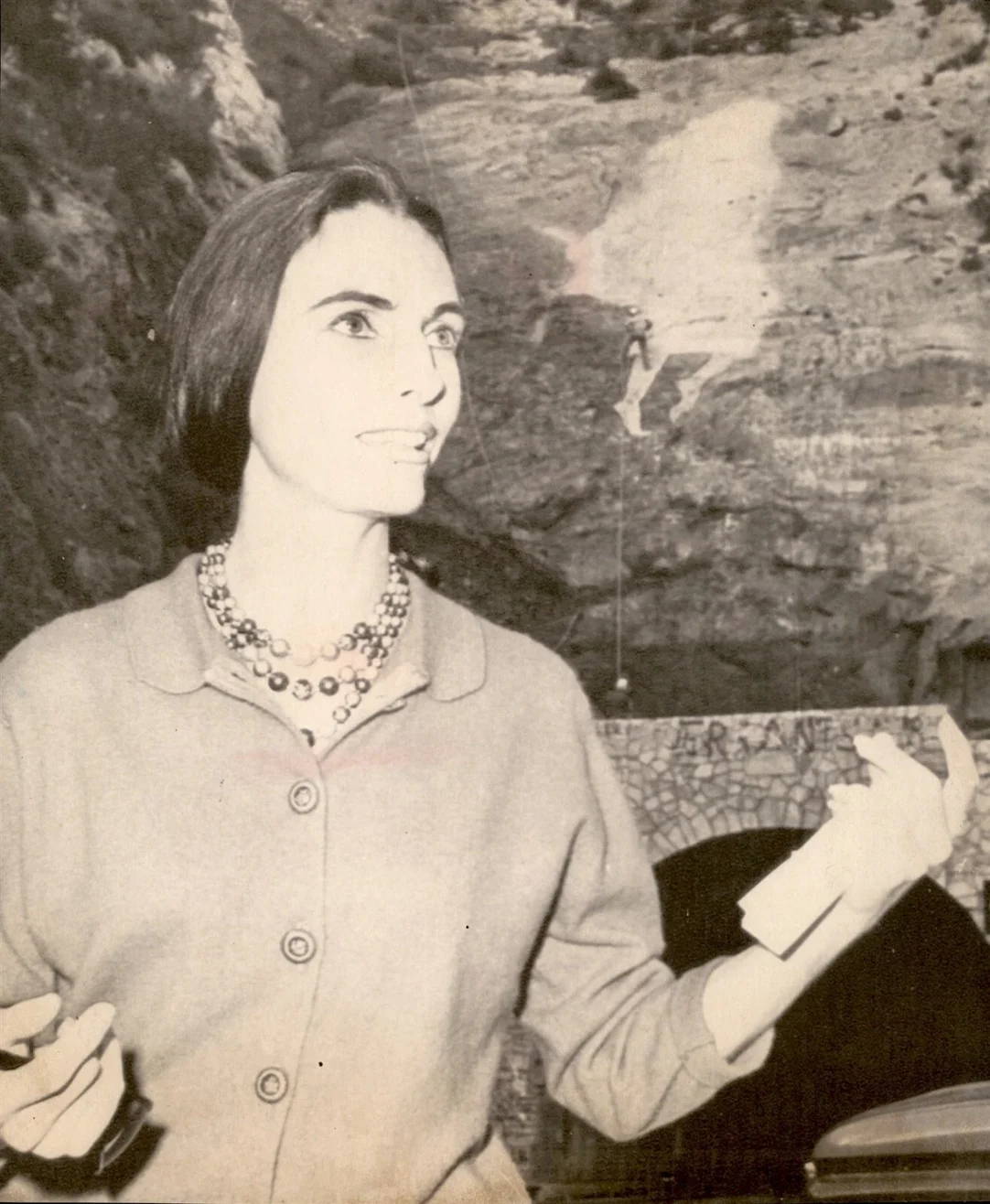
County supervisors were undeterred. Some officials fumed that the painting was obscene. One indignant supervisor publicly demanded “the man who painted this” come forward and reveal what kind of paint had been used, given its stubborn permanence. The assumption, that only a man could have pulled off such a daring stunt, did not sit well with the Pink Lady’s true creator. Upon hearing officials repeatedly refer to the anonymous artist as “he,” Lynne Seemayer’s frustration boiled over. She decided to come forward, in part to shatter their assumptions. Seemayer held a press conference and confessed that she, a local housewife and artist, was responsible for Malibu’s infamous nude mural. Her hope was that by putting a human face to the artwork, and a respectable, soft-spoken mother at that, the county might spare the Pink Lady from destruction.
Rise and Fall of an Icon
Unfortunately, revealing herself did little to change the county’s mind. Seemayer’s last-minute legal efforts (including seeking a court injunction) could not halt the inevitable. On November 3, 1966, barely a week after it first delighted Malibu, the Pink Lady met her end. A road crew hauled up 14 gallons of drab paint and unceremoniously covered the vibrant nude with a slopping coat of brownish-grey.
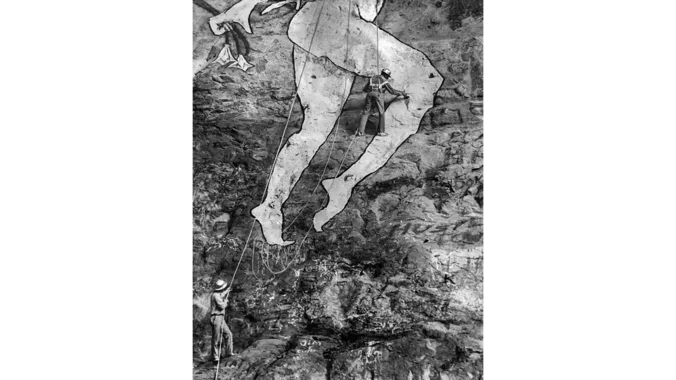
Spectators actually showed up to watch the “execution,” some shouting protests or shedding tears as the figure disappeared under rolling brushes. In their eyes, a piece of joyous public art was being killed off in the name of caution and conservatism. Seemayer herself could not bear to watch the final moments; she turned away as her masterpiece was buried under paint.
The saga, however, didn’t quite end there. The Pink Lady proved as tenacious in death as she was in life. Traces of pink persisted beneath the hastily applied cover-up, and for years, even decades afterward, a faint outline of the naked lady could be seen peeking through the canyon rock in the right sunlight. Locals would point to the spot and swear they could still make out the silhouette of a woman, like a ghost imprint on the cliffside. The legend of the Pink Lady only grew: parents told their children the tale of Malibu’s ephemeral giantess, and longtime residents shared memories of the magical week when a mysterious nude lady had graced their mountain. The county’s attempt to erase the Pink Lady had, in a sense, backfired. By trying so hard to censor her, they turned a short-lived mural into a martyr. As one commentator later quipped, the “marvelous ‘Martyr of Malibu’ still lives on in memory” long after the paint itself faded.
For Lynne Seemayer, the aftermath was bittersweet. She had never sought fame or controversy, “I did it simply as an art piece, and that was all,” she explained when people tried to read grand meanings into her act. Still, the Pink Lady episode changed her life. She briefly became a media sensation, even being featured in Life magazine and newspapers worldwide as the cheeky artist who outwitted the establishment. There were upsides: art galleries took notice of her talent, and she went on to have a long career as a sculptor and painter in Southern California. But there were also costs. Seemayer lost her job as a legal secretary after the incident (her employers didn’t appreciate the notoriety), and the stress of the public furor even landed her in the hospital for a time. She received all kinds of reactions from the public, from marriage proposals and fan mail, to vicious letters and threatening phone calls. It was a turbulent time, but Seemayer persevered. Both she and Malibu eventually moved on, yet neither forgot the Pink Lady.
From Local Legend to Lasting Legacy
Today, nearly six decades later, the Pink Lady lives on as a cherished piece of Malibu lore. Though the original painting is long gone from the canyon wall, her story remains firmly etched in the community’s collective memory. Many a Malibu old-timer can still recall that Halloween weekend of 1966 when art literally popped up out of nowhere. Ask around town, you might even find that a veteran Realtor in Malibu, a surf instructor, or a local shop owner who grew up here will excitedly tell you the tale as if it happened yesterday. The Pink Lady has been referenced in books, newspapers, and even academic discussions as a prime example of guerrilla art and the cultural climate of the ’60s. In the art world, muralist Kent Twitchell later hailed Lynne Seemayer as the “godmother of Los Angeles street art,” recognizing her early contribution to public art rebellion.
Malibu itself has embraced the legend in various ways. Over the years, commemorative Pink Lady postcards, T-shirts, and prints have circulated among fans, and local historical societies recount her saga to new generations. In 2016, on the 50th anniversary of the Pink Lady’s appearance, nostalgia ran high as local media reflected on “Malibu’s most jaw-dropping feat of guerrilla art”. And in January 2017, when Lynne Westmore Bloom (Seemayer) passed away at age 81, Malibu paid tribute in the most fitting manner: a high-tech projection of the Pink Lady was beamed onto the same cliffside, once again illuminating the tunnel with that iconic 60-foot figure in glowing pink.
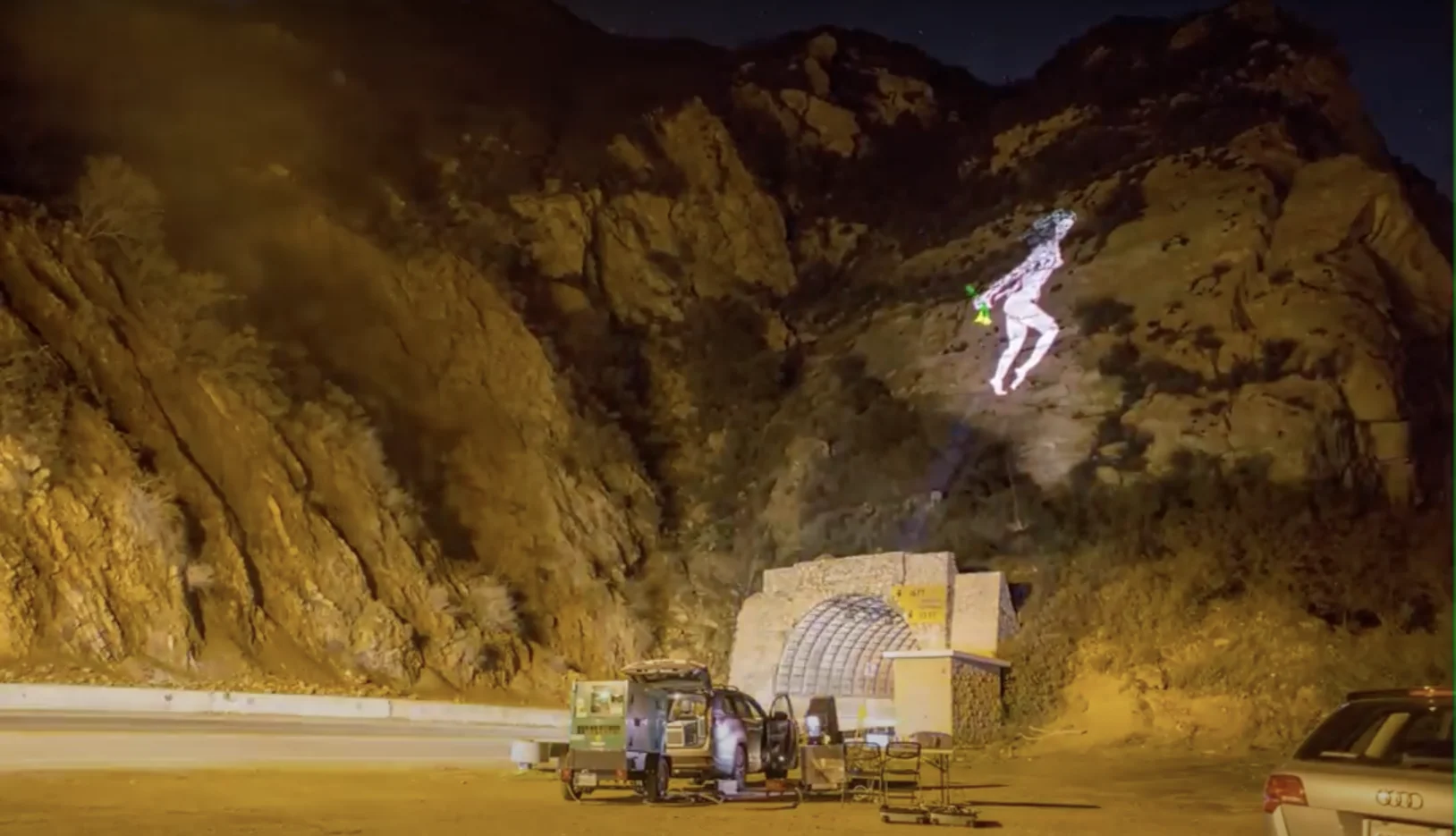
For one night, the Pink Lady returned, dancing above Malibu Canyon Road and reminding everyone of her place in the area’s history. It was a touching send-off to the artist and a celebration of the free spirit she embodied.
From a one-week wonder to a permanent legend, the Pink Lady’s impact on Malibu has outlasted her physical form. She represents the rebellious creative heart of this community, a place that welcomes bold ideas, cherishes its stories, and doesn’t easily forget when something magical graces its landscape. In a town known for luxury and natural beauty, from pristine beaches to exclusive Malibu Real Estate, it’s often these cultural legends that truly capture the soul of Malibu. The Pink Lady may have been painted over, but in the minds of locals, she’s still there on the cliff, forever running with flowers in hand, a symbol of Malibu’s unabashed artistic soul.
Malibu’s history is filled with colorful tales like this, and each adds to the allure of living here. If you’re inspired by the vibrant community and rich stories of Malibu and are looking to make this place your home, consider reaching out to Shen Realty. As a Malibu local and the Best Malibu Realtor, Shen Schulz has the insider knowledge and passion to help you find your own slice of paradise in this legendary town. Whether you’re drawn by the culture, the coastline, or the lore of Malibu’s past, you’ll be in expert hands with a trusted partner who understands what makes Malibu so special. Embrace the spirit of Malibu – and maybe someday you’ll have your own local legend to tell – all with the guidance of the top Malibu Real Estate professionals at Shen Realty.
Sources: 1, 2, 3, 4, 5, 6, 7, 8, 9, 10,